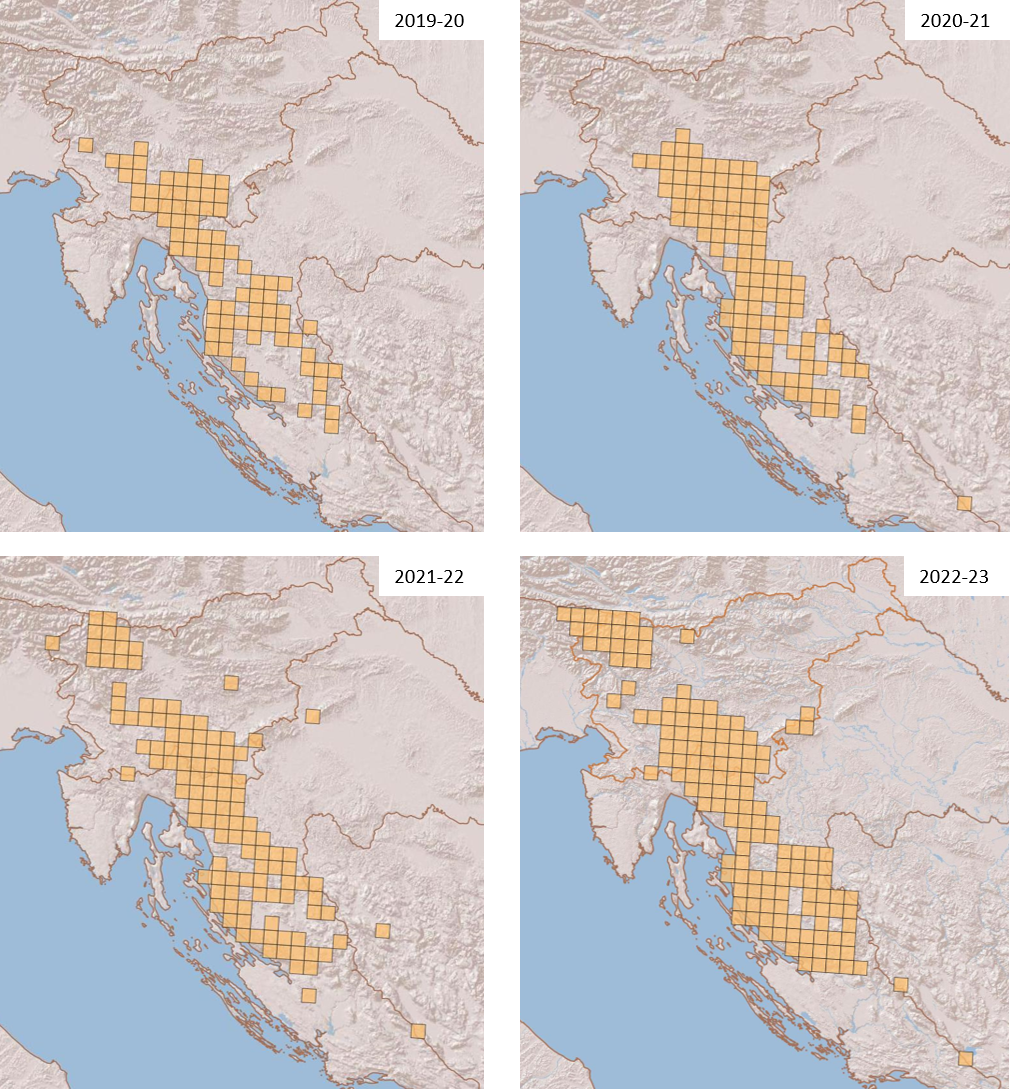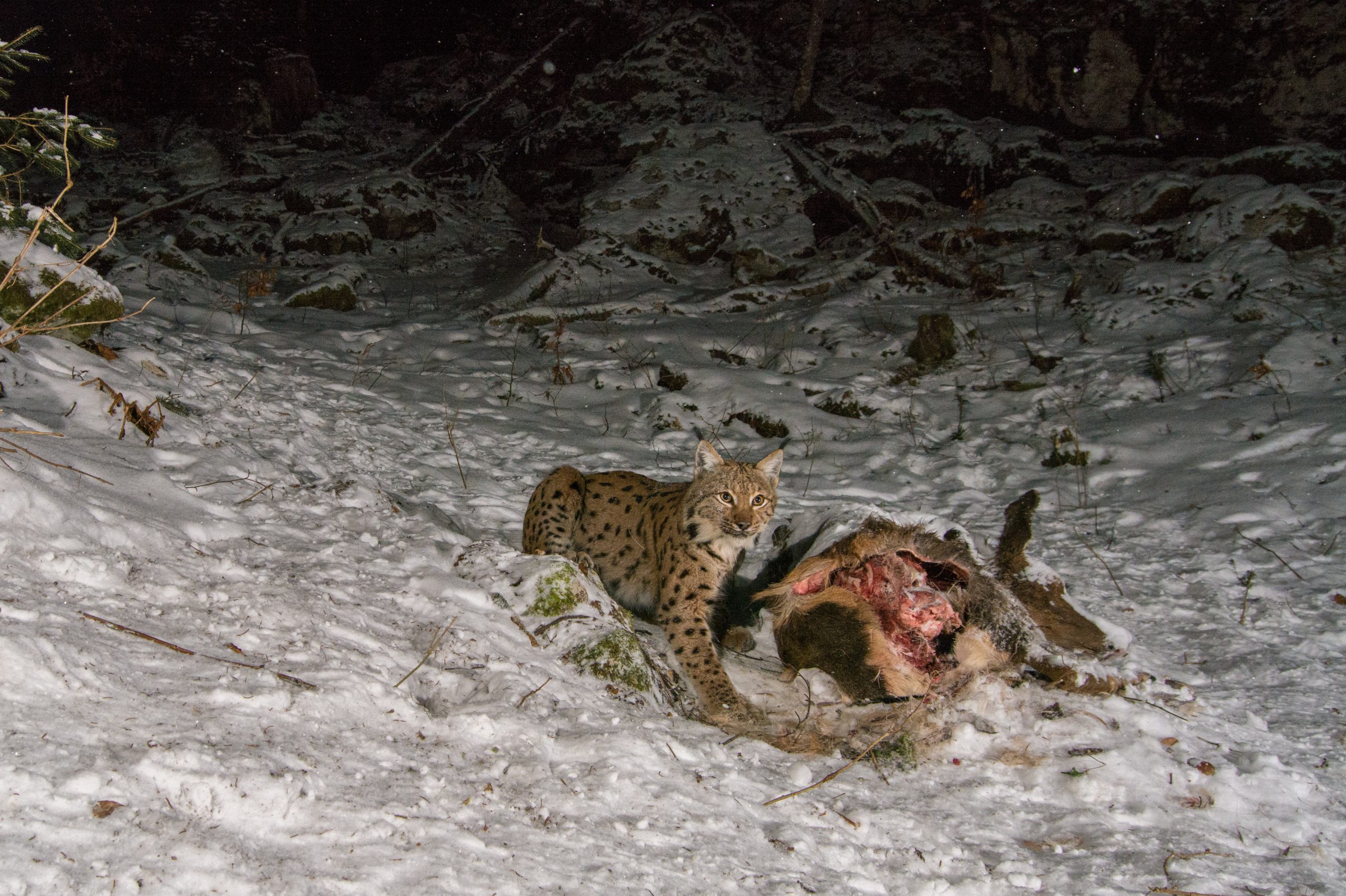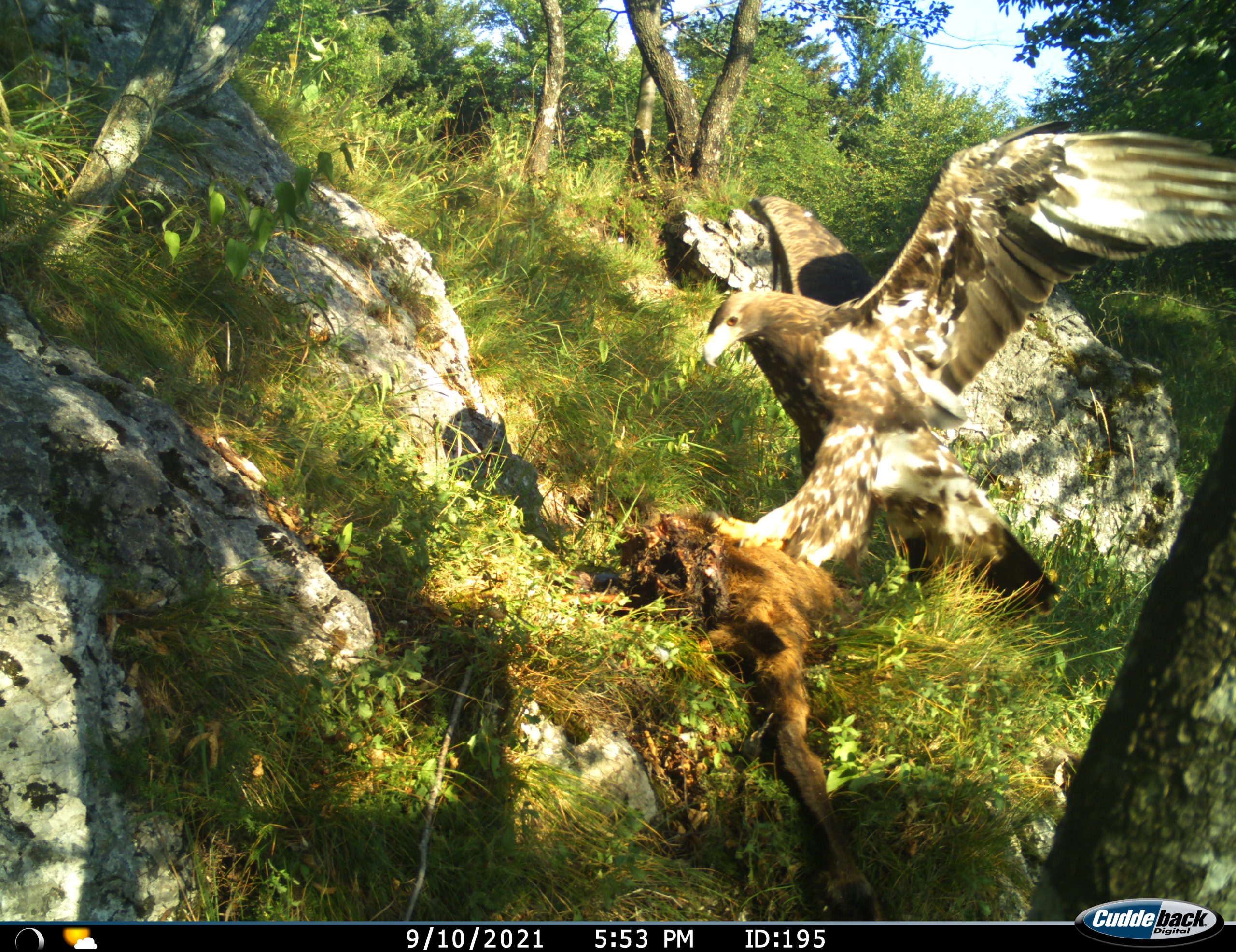Between 2019 and 2023, we intensively followed the process of integration of the translocated lynx into the Dinaric SE Alpine population. We were studying the impacts of these translocations on the Dinaric SE-Alpine lynx population by recording signs of lynx presence and lynx mortality, systematic camera-trapping and telemetry tracking and non-invasive genetic sampling. Besides the LIFE Lynx project staff, more than 200 hunters, nature conservation officers, rangers, and other volunteers from almost 100 different organizations have been involved in the surveillance program. Over the course of four years, we have progressed considerably; we increased the area surveyed with camera traps, the number of lynxes fitted with telemetry collars, and the total number of data about lynx collected.

The increase in lynx distribution in Italy, Slovenia and Croatia.
Telemetry was used to monitor translocated lynx and their offspring, as well as remnant lynx from the Dinaric Mountains. Through more than 400 field visits, we confirmed that the lynx mainly prey on roe deer (>80% of all prey found in the field). Additionally, we discovered that lynx kills represent an important food source for other species in the forest ecosystem, as more than 19 other mammal and bird species, including threatened species such as golden eagle and white-tailed eagle, were recorded feeding on lynx kills.

Lynx Klif on his prey. Photo: Lan Hočevar

Golden eagle on lynx’ prey remains. Miha Krofel, LIFE Lynx
During the last, most extensive, monitoring season (2022-2023), camera trapping covered a considerable area of more than 12,000 km2 across three different countries (Croatia, Slovenia and Italy). Lynx was recorded at more than 60% of the locations, and their abundance in Slovenia and Croatia was estimated at 156 ± 19 adult lynx. Similarly, the density reached 1.27 ± 0.15 lynx/100 km2, indicating that the once poorly occupied lynx habitat in the Northern Dinaric Mountains is being successfully filled.
We closely surveyed the lynx in the Julian Alps too and detected the presence of new adult animals in the Alps alongside the translocated lynx (probably their offspring), indicating strengthening of the established stepping stone population.
This comprehensive surveillance of the lynx population allowed us to confirm that the translocations have considerably improved the status of the lynx population in the Dinaric Mountains and in the Alps. As the effect of translocations is expected to continue, the further changes in the population should continue to be closely monitored across its extended range.
